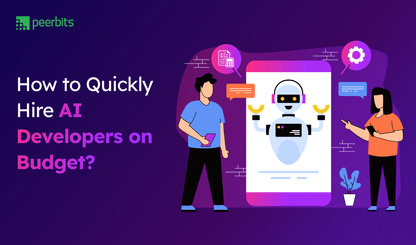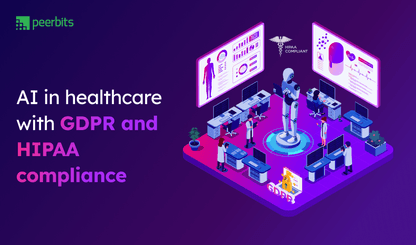You are probably already using some form of automation in your business. Maybe it’s a rule-based workflow for handling repetitive tasks or a prompt-based system that taps into large language models. These setups definitely help, but their impact has limits.
Once the process gets complex or needs flexibility, traditional automation starts to fall short. That’s when the question shifts from “How do we automate this task?” to “Can the Agentic AI system take ownership of the goal?” This is exactly where Agentic AI begins to stand out.
According to Gartner, Inc., by 2029, Agentic AI will autonomously resolve 80% of common customer service issues without human intervention, resulting in a 30% drop in operational costs. It’s a powerful direction that’s pushing many teams to think beyond static automation.
If you have been exploring AI agent development or looking for ways to scale smarter, agentic automation offers something different. These are not just better tools they are AI agents for business that act independently, adapt in real-time, and work toward defined outcomes.
Limitations with traditional business automation
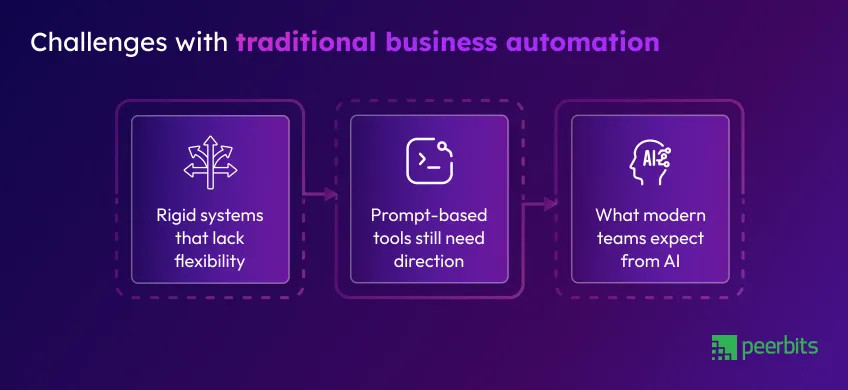
Before jumping into Agentic AI system, it is important to understand the gaps many teams already face with their current automation setups.
Traditional tools often fall short in handling dynamic scenarios or adapting to real-time changes, which is pushing businesses to rethink how they approach workflow automation.
Rigid systems that lack flexibility
You might have set up automation to handle form submissions, trigger alerts, or send notifications. It works until the moment something unexpected happens. Maybe a condition is not met, a field is empty, or the flow breaks because it wasn’t designed to handle variation.
Traditional workflow automation depends on predefined logic. If it sees anything outside the script, it stalls. That kind of rigidity might have worked a few years ago, but not today.
Prompt-based tools still need direction
When large language models entered the scene, they added more flexibility. You could generate responses, summarize data, or even build tools that followed instructions. But prompt-based systems still wait for direction or prompt chaining services to execute their functions.
They don’t initiate tasks, adapt plans mid-process, or aim toward a goal. You have to constantly guide them. This creates an illusion of autonomy, but it’s still manual under the surface.
What modern teams expect from AI?
Businesses are using business automation to streamline tasks and manage outcomes more efficiently. Whether it is workflow automation across departments or customer service automation AI tools for handling high volumes, teams need systems that can think through next steps, not just execute one at a time.
That is why interest in agentic automation and autonomous AI systems is rising. These systems react, observe, plan, and act based on the bigger picture.
How Agentic AI changes the automation model?
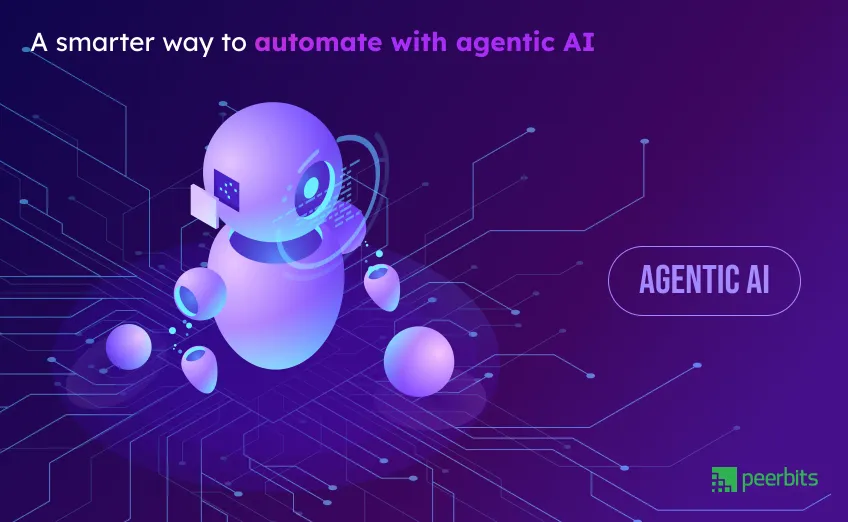
Agentic AI is another layer on top of existing automation. It changes the core logic from rule execution to outcome ownership. Let’s see how it works, how it's different, and why it’s changing how businesses think about automation.
Goal-oriented nature of Agentic AI
With Agentic AI, the system does not wait for instructions at every turn. Instead, it is given a goal and then it decides the best path to reach it.
This is what separates it from traditional tools. These autonomous AI systems can make decisions, take actions, and use tools independently. They do not need constant input or manual guidance to move forward.
For example, while your team may define what a successful result looks like, the agent figures out which tools to use, which data to check, and what sequence makes sense based on current conditions. That is not automation, but it is an agency.
What makes Agentic AI different?
Here’s what truly defines agentic AI systems:
- Autonomy: Agentic AI systems work independently once given a goal. They don’t rely on constant input and can decide what steps to take. Whether it's resolving tickets or managing tasks, the agent acts on its own using logic and feedback.
- Adaptability: If something fails or changes midway, agentic AI adjusts. It can handle missing data, shifting inputs, or unexpected errors without stopping. Instead of breaking down, it finds another way to complete the goal.
- Tool-use: These agents connect with your business tools like APIs, CRMs, databases, or any third-party platform. They observe data and interact with it, pull updates, send actions, and work across systems just like a real team member would.
- Memory: Agents remember what happened before. Whether it's previous decisions, outcomes, or user interactions, this memory helps guide what to do next. It improves accuracy, reduces repeated effort, and adds continuity to every task.
Together, these traits let AI agents for business handle end-to-end goals instead of just completing tasks.
Quick comparison table
| Type | Example Task | Limitation |
|---|---|---|
| Traditional automation | Email report generation at 6 PM | Fails if data schema changes |
| LLM chatbot | Summarizing a contract on request | Can’t decide which contract to pick |
| Agentic AI | Reviews all contracts weekly & flags risks | Adapts to structure and context automatically |
Impact of Agentic AI- Real world examples
Agentic AI is already active in key business functions. From software engineering to logistics, these systems are being used to reduce manual load, adapt in real time, and drive better outcomes.
Here are a few examples showing how agentic automation is finding its place in real-world scenarios.
Software engineering workflows
Example: Devin by Cognition Labs – An AI agent that writes, debugs, tests, and deploys code autonomously.
Developer teams use agents like Devin to speed up prototyping and offload repetitive coding work. Instead of waiting for instruction, these agents decide what’s needed to deliver the next version or complete the sprint goal, making software development workflow faster and more adaptive.
Research and market intelligence
Example: AutoGPT – Given a market research goal, it identifies relevant sources, gathers data, analyzes trends, and summarizes key insights.
Instead of manually combing through data or hiring a research team for early insights, AutoGPT can break down complex research tasks and execute them step by step without supervision.
How to know if you need Agentic AI?
Agentic AI can be powerful, but it is not the answer to every problem. Some tasks are better handled with simple automation or scripts, while others truly benefit from intelligent agents that can think and adapt.
Use-case traits that fit agentic AI
Agentic systems work best when the task:
- Involves multiple steps or interacts with several tools
- Requires decision-making, not just execution
- Relies on changing inputs or real-time context
- Can’t be solved using a simple rule-based workflow
If your current automation feels limited by logic trees or constant manual updates, it might be a strong candidate for an AI agent system.
Applications of Agenctic AI on early Adoption
These are some early use cases where agentic AI has already shown results:
-
Internal research assistants: Useful for scanning large volumes of documents, summarizing key trends, pulling relevant data from internal sources, and even tracking competitor activities across multiple platforms.
-
HR or finance coordinators: Helpful for handling internal requests like leave approvals, expense tracking, or payroll queries. These agents can also manage forms and route queries based on urgency or policy logic.
-
Marketing performance analyzers: Designed to review campaign data across channels, compare results against targets, and recommend optimizations such as timing adjustments, budget shifts, or content tweaks.
-
QA prioritization agents: Assist development teams by scanning bug reports, analyzing past issue impact, and highlighting which test cases or bugs should be prioritized during each sprint.
These roles usually demand flexibility, contextual understanding, and interaction with multiple systems, traits where agentic automation works better than static rules.
Building your own Agentic AI: Key requirements
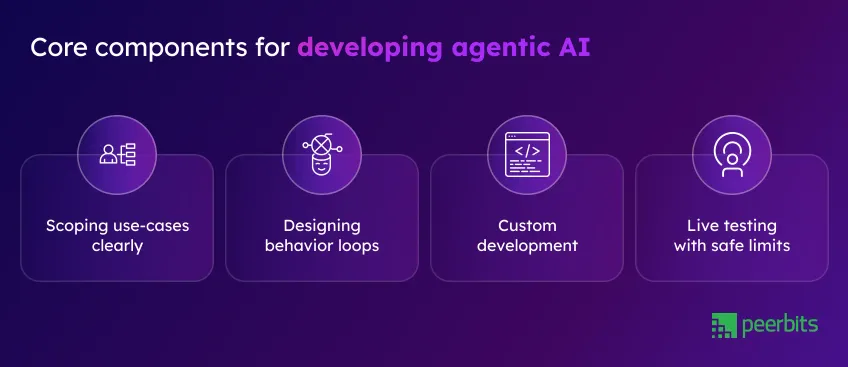
Getting started with agentic AI begins long before any code is written. It starts by asking the right questions, defining safe boundaries, and understanding how agents operate in changing environments. Let’s see how most teams begin that journey.
Instead of moving straight to AI development, most teams begin by asking:
- What goals should the agent own?
- How much autonomy is safe in our environment?
- What systems, tools, or data should it have access to?
- How will we measure if it’s making the right decisions?
At this stage, the focus is on designing useful behavior loops and testing ideas in controlled way.
Here is what that usually involves:
-
Scoping use-cases clearly: Not every workflow needs an agent. Focus on tasks that involve multiple steps, shifting inputs, or judgment-based decisions. These use-cases tend to benefit the most from agentic automation.
-
Designing behavior loops: A solid agent operates on a loop of thinking, planning, acting, and checking results. This loop helps the system adapt, refine its actions, and make better decisions over time instead of just repeating steps blindly.
-
Custom development: Most agents need to integrate with internal systems like CRMs, APIs, data warehouses, or project tools. Building these integrations is a key part of AI agent development, and it defines how well the agent fits into your workflow.
-
Live testing with safe limits: Early-stage agents are often deployed in low-risk environments like internal tools or sandboxed workflows. This lets teams monitor behavior, gather feedback, and make adjustments before exposing the agent to customers or business-critical processes.
Read more: AI development cost breakdown in 2025: Everything you need to know
Once the model proves stable and useful, it becomes easier to scale the agent across departments or external workflows.
Conclusion
Agentic AI adds a new layer to your workflow. It’s about task execution and systems that pursue goals, work across tools, and adapt when things change. For teams dealing with shifting demands or high volumes of repetitive decisions, this model offers a smarter alternative.
You don’t need a large-scale rollout to get started. The most successful companies begin small. One use-case, one agent, one clear result. That is often enough to see the difference between traditional automation and intelligent agents in business.
What matters is clarity on what the agent should achieve, how much freedom it needs, and how success will be measured. Once you have that, the rest becomes a build-and-learn cycle.
If you have already seen the limits of traditional automation or prompt-based tools, it might be time to explore what’s next. You don’t have to commit everything. Just start where automation stops and let your results guide the rest.



